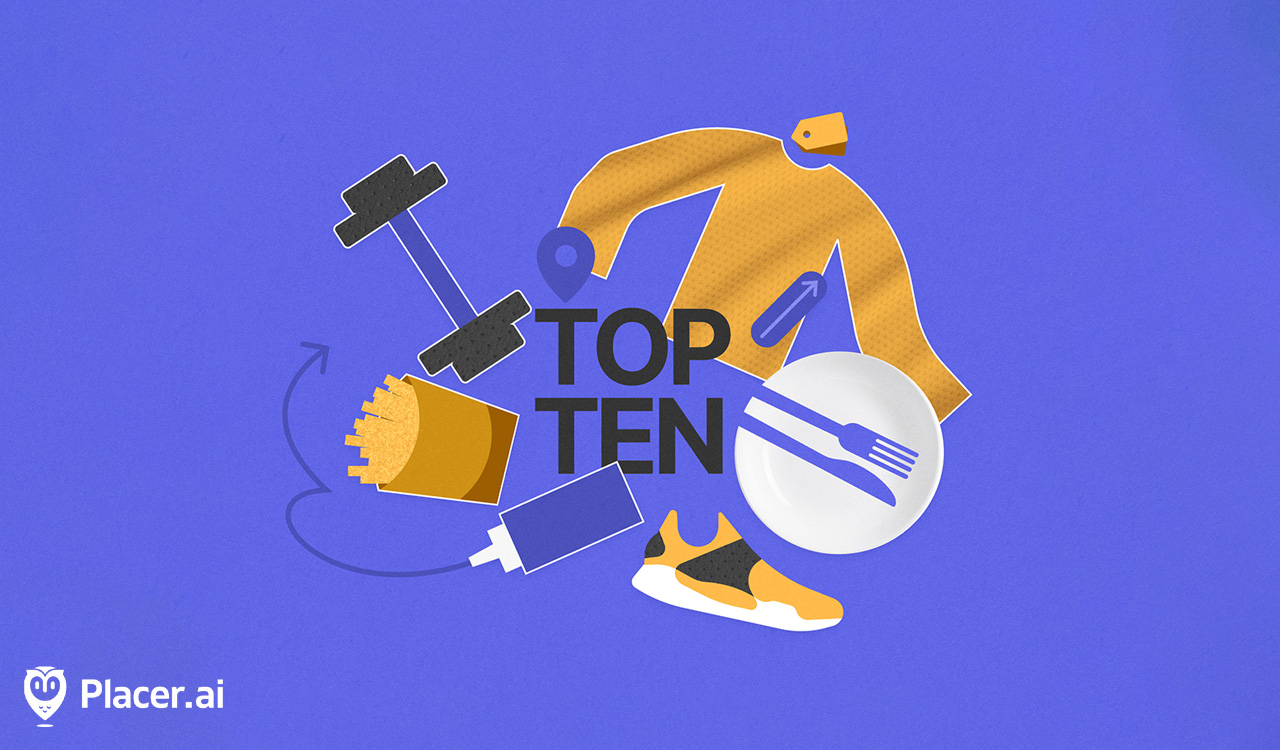The brick-and-mortar Dongdaemun Seoul shopping district, home to an estimated 30,000 fashion and clothing shops across a thicket of multistory malls, is both a symbol of the rise of Korea’s fashion industry and a bellwether of its future success. Despite the robust rise in sales and the surging popularity of Korean fashion brands, many Dongdaemun retailers are struggling, in large part because their customers are finding it cheaper and more convenient to shop online—through Chinese sites.
Korea’s digital shopping pioneers were once seen as global ecommerce innovators, but the inexorable growth of Alibaba, Temu, Shein and other Chinese retailers and platforms has revealed that their early breakthroughs are insufficient to compete against good old-fashioned scale and reach.
The China Syndrome
Korean retailers are highly dependent on Chinese suppliers, adding bitter irony to their disintermediation. And now, Korea’s cluster of popular fast fashion, cosmetic and lifestyle shopping sites (which also source large parts of their inventory from China, albeit from Korean-owned and managed brands and producers) are also under threat. Chinese ecommerce platforms are reportedly undercutting their Korean counterparts on price and convenience in their own backyard. Korea’s digital shopping pioneers were once seen as global ecommerce innovators, but the inexorable growth of Alibaba, Temu, Shein and other Chinese retailers and platforms has revealed that their early breakthroughs are insufficient to compete against good old-fashioned scale and reach.
Korea has long been an intensely digital economy. Broadband penetration has been practically ubiquitous for nearly a quarter-century: at nearly 90 percent, the OECD estimates that Korea has the world’s highest fiber-to-the-home penetration (more than twice that of the U.S.) and over 40 percent of the country’s 80 million smartphone users are on 5G networks. Mobility has been key to driving ecommerce in Korea: In 2023, mobile commerce transactions accounted for nearly 75 percent of the $166 billion consumers spend online.
Hallyu-iah
Speedy, ubiquitous Internet access turned Koreans into early online shopping fanatics and gave birth to a number of uniquely innovative ecommerce models very early in the digital era, such as multi-brand online shopping “malls” which provided Korean consumers local-language convenience and choice long before Amazon entered the market. Shopping clubs, where groups of netizens collectively bargained for online deals, were an early facet of Korean social media culture. More recently, Korean retailers became early adopters of KOL- (key opinion leaders, aka infliencers) driven marketing and brand amplification, further burnishing local brands, and boosting sales.
This in turn, has created a virtuous cycle, fueling Korea’s rise as a global culture powerhouse—a phenomenon known as “Hallyu,” or The Korean Wave. Films, music, fashion and consumer brands have both fueled a domestic shopping boom and a wave of product and content exports which generated some $29 billion in economic value between 2017 and 2021, according to research conducted by the Korea Economic Research Institute. The Korean beauty market alone is estimated to be a $10 billion market.
Digital Natives
At their core, most Korean ecommerce platforms and online retailers trade on the long tail of the country’s local culture. In many cases, this means that Korean sites are inheritors of their digitally native customers’ decades of online experience, allowing them to be local language and content versions of traditional ecommerce sites. This includes Naver, Korea’s dominant internet portal, which racks up roughly twice the monthly unique visitors as Google. Coupang is often thought of as Korea’s answer to Amazon: an online retailer, largely focused on food and necessities, with nationwide fulfilment and last-mile delivery capabilities. Coupang, which went public on the NYSE in March 2021, reported its first operating profit in 2023 ($473 million on $24.3 billion in sales), and while these results helped boost its share value, they are still trading at less than half their IPO launch price, in part dragged down by its acquisition of beleaguered UK-based luxury site Farfetched.
Other shopping sites and platforms have dug deeper into the uniqueness of Korean Cool (be it chic facial creams or edgy streetwear) to offer shoppers curated collections online, often presented by online influencers. This is the case with Ably Corporation, which launched a mobile shopping app in 2015, that hosts KOL-curated women’s fashion collections and uses AI-enabled analytics to drive and refine suggestions for users. Ably’s app boasts over seven million monthly active users, making it one of Korea’s largest fashion shopping sites, and by March of last year had raised nearly $188 million over five financing rounds. At the time, the company was headed for a C round of venture financing and a valuation of 900 billion Won ($657.3 million) and was believed to be on a “unicorn” track.
If You Can’t Beat ‘Em—Be Bought by ‘Em?
Unfortunately (and ironically) for Korea’s domestic ecommerce platforms, the domestic digital savviness on which they have built their success is now working against them. Smart Korean shoppers are increasingly able to circumvent Korean online malls to purchase local clothing and homeware brands through Chinese sites: Aliexpress and Temu now have the third and fifth highest visitor traffic amongst all Korean ecommerce destinations (although the two combined receive less than half of Coupang’s 30 million monthly visitors). Much like the early online shopping clubs at the dawn of Korean ecommerce, social media messaging groups are emerging to trade tips on how to synthetically replicate the Korean online experience over Chinese sites.
While many of Korea’s online portals are faltering, some are failing: Online wholesale clothing aggregator Linkshops, which has serviced brick-and-mortar retailers in Dongdaemun and elsewhere since 2018, filed for bankruptcy in January. Some are even looking for lifelines from their competitors: Chinese ecommerce giant Alibaba, through its global retail platform AliExpress, has been cited in the Korean press as being in talks to acquire a five percent stake in Ably Corp. for $72.4 million.
High Fences Make for Bad Neighbors
One unfortunate, but rather predictable, move to staunch the flow of shopping traffic to Chinese ecommerce platforms has been trade sanctions. In March, the Korea Fair Trade Commission (KFTC) announced a plan to introduce ‘consumer protection measures’ against international ecommerce platforms, and the government is also reportedly looking to amend the Act on the Consumer Protection In Electronic Commerce to restrict the ability of foreign ecommerce
It is this protectionist move that most likely explains Alibaba’s keenness to acquire a slice of Ably. Similar to Tiktok’s purchase of a stake in Indonesia’s GoTo last year to circumvent a new restriction against ecommerce sales by foreign social media sites in that country, Ably will provide China’s ecommerce giant with the protective localization cover it needs to keep selling under sanctions. This will prove more practically useful than any competitive edge the Korean app, community or platform provides.
Korea’s lurch towards ecommerce protectionism could easily backfire, particularly if it is perceived by China to be chiefly directed at its national companies. China has been smarting from a growing thicket of export bans and other trade restrictions from the U.S. and Europe, as the West tries to blunt the competition of Chinese technology-intensive exports, from solar panels and semiconductors to, most recently, electric vehicles. Increasingly, China’s go-to move has been to hit back with restrictions of its own. A focus of discussions between Presidents Xi Jinping and Emanuelle Macron during Xi’s recent state trip to France was China’s launch of an ‘anti-dumping investigation’ of European wine-based liquors. The investigation is largely seen as a threat to increase tariffs on French cognac, which Chinese consumers consume an estimated 400 million bottles a year.
China’s response to Korean ecommerce sanctions could be similarly punitive. China has been the world’s second-largest market for K-pop music for over a decade—although it slipped to third place last year and continues to flag. While a relatively tiny market of roughly $22 million in album sales, K-pop is the pointy end of Korea’s Hallyu spear: Korean KOLs, largely from the K-pop world, help sell Korean fashion, cosmetics, and phones. A Chinese move to ban Korean girl bands would blunt Korean cultural exports to an extremely important market.
Brand Rich, Channel Poor
There is little doubt that Hallyu brands and products will continue to thrive at home in Korea and globally. The interplay between the two markets creates a refresh cycle that brings global ideas to the domestic market where Korean fashion innovators can give them spin and verve. It is, however, no longer the case that Korean online platforms hold a uniquely indefensible position in the country’s digital retail ecosystem. Certainly, platforms like Ably, which have found some success collaborating with Korean KOLs and curating their collections with algorithmic precision, will likely continue to hold onto unique niches. But it’s not far-fetched to assume that scale-intensive Chinese ecommerce players which already employ similar technology-enabled curation strategies, like Shein, can easily localize their model for Korean consumers as well.
The Korean online shopper today no longer needs local language gatekeeping and curation from domestic platforms. They are, much like the brands they crave, globally savvy and fully able to toggle between internet worlds. To remain relevant to their domestic consumers, Korean platforms and online retailers must increase their reach and endure some price pain. It’s a brutal shopping world today, and Korean consumers are calling the shots. To survive, retailers are going to need to stay seven steps ahead.





